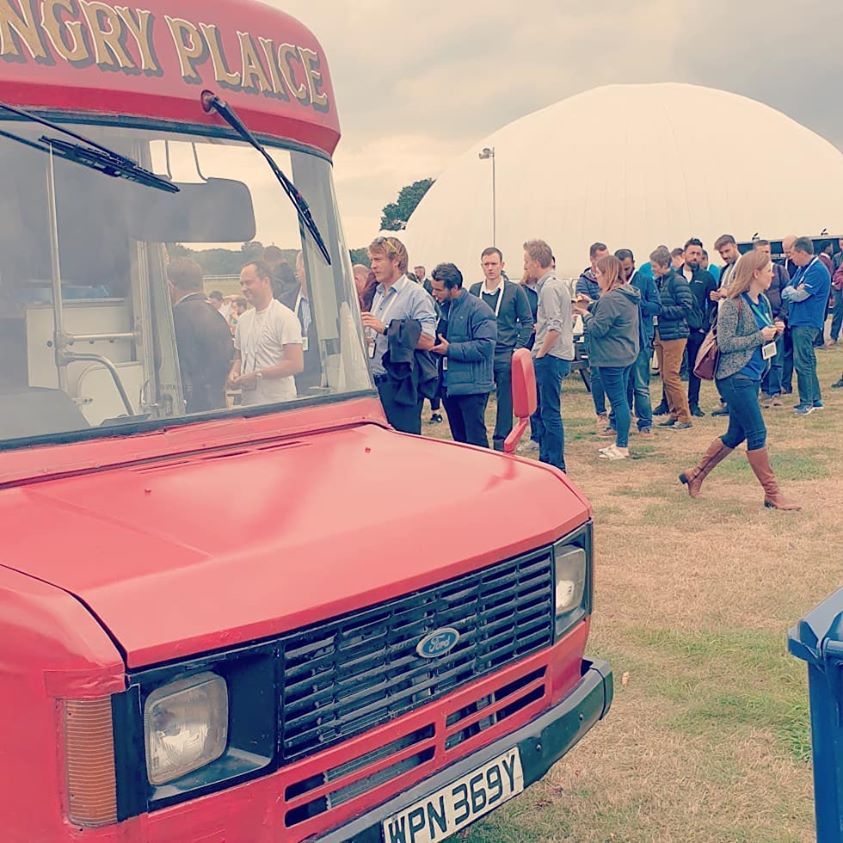When you think of fish and chips, what comes to mind? For many, this classic dish evokes memories of cozy seaside towns or bustling city streets. But the journey from ocean depths to your favorite food truck is a story worth telling. It’s not just about satisfying our cravings; it’s about culture, community, and the connections we share through food.
From Sea to Street: Discover the Fish & Chip Journey
From Sea to Street: Discover the Fish & Chip Journey
Fish and chips are more than just tasty bites wrapped in paper. They symbolize resilience, comfort, and tradition. With roots steeped in British history, this dish reflects local fishing practices and has fostered community spirit for generations. Whether enjoyed on a rainy day or at a vibrant festival, each crispy bite carries with it tales of fishermen braving the waves and chefs perfecting their craft. Join us as we dive deeper into the fascinating world of fish and chips—exploring its origins, sustainability practices, and the unique role it plays in modern culinary culture. Trust us; you won’t want to miss this flavorful journey!
The Origins of Fish and Chips
Fish and chips, a dish synonymous with British culture, traces its roots back to the 19th century. Although fried fish has been enjoyed for centuries—think of the Romans and their penchant for frying fish in oil—it was the industrial revolution that solidified this dish's place in pubs and homes alike. The first documented pairing of fish with chips appeared in London during this transformative era, often served as an affordable meal for working-class families seeking sustenance amid changing economic conditions. This combination quickly gained popularity, leading to the establishment of dedicated fish-and-chip shops known as “chippies.”
The ascent of fish and chips within British cuisine cannot be overstated; it became a staple in communities throughout the United Kingdom during the late 1800s. By this time, fish fried in batter—a technique introduced by Portuguese immigrants—was paired with thick-cut, deep-fried potatoes. This crudely prepared yet delectable fare resonated with many citizens looking for hearty meals at reasonable prices. As the dish captured hearts (and appetites) across England, it even received royal endorsement when King Edward VII declared his love for the savory treat at Piccadilly Circus around 1900.
Beyond mere sustenance, fish and chips epitomize a strong connection to local communities and fishing traditions that have endured through generations. Many coastal towns celebrate their rich fishing heritage by serving fresh catches directly from nearby waters and supporting local fishermen who carry on age-old practices passed down through time. Market towns thrive on their bustling “chippy” scenes, creating bonds among neighbors over shared memories of eating fried cod while sitting sea-side or standing in long lines on Saturday evenings.
As you enjoy your next serving of golden-hued fish wrapped in paper—with droplets of vinegar splashed on top or a side of mushy peas—take a moment to appreciate not just its flavor but also its journey from humble beginnings to beloved national treasure. It's more than just food; it represents resilience, community spirit, and nostalgia woven into every crispy bite shared amongst friends and family at their favorite local haunt.
Sourcing Fresh Ingredients
The journey of fish and chips doesn't just begin at the frying pan; it starts long before, in the chilly depths of the ocean, where local fishermen cast their nets. Sourcing fresh ingredients from local fisheries is not only a nod to sustainability but also ensures that communities can maintain their traditional fishing practices. When food trucks prioritize partnering with fishermen from nearby waters, they help reduce industrial fishing's environmental impact while supporting those who are dedicated to these time-honored crafts. This connection builds a sense of stewardship for both the ocean and the communities that depend on it.
Seasonal availability heavily influences the quality and flavor profile of fish served in your favorite fish and chip dish. Imagine enjoying wild cod in spring when it's flaky yet firm, as opposed to less desirable alternatives available during off-seasons. By sourcing directly from local fisheries, food truck operators can provide freshly caught seafood that has been carefully managed to reflect its peak season. This not only provides diners with premium grub but also educates them on why certain species are more abundant at different times of year, fostering appreciation for nature’s cycles.
Moreover, direct partnerships with suppliers create a robust supply chain dedicated to freshness and quality control. Many successful food trucks establish relationships with local fishermen who understand the intricacies of their needs — from specific types of fish required for a recipe to ensuring daily catches meet high-quality standards. As an example, consider fish & chip vans like “Coastal Bites,” which develop deep-rooted relationships with fishermen in Maine’s rockbound coast. These partnerships empower vendors to create menus that epitomize freshness while emphasizing transparency about where their ingredients come from.
In summary, sourcing fresh ingredients enriches the overall experience of enjoying this beloved dish by honoring sustainable practices and seasonal availability. Diners savor not just an incredible meal but also participate in a greater narrative—one that celebrates community connections and respects marine ecosystems. So next time you indulge in crispy battered fish paired with golden fries, take pride knowing each bite supports local livelihoods while offering unparalleled flavors straight from sea to street!
Sustainable Practices in Seafood Sourcing
In recent years, the conversation around sustainability has transformed from a niche topic into a central focus for consumers and businesses alike. When it comes to sourcing seafood, sustainable fishing methods are essential not only for preserving marine ecosystems but also for ensuring that future generations can enjoy beloved dishes like fish and chips. Techniques such as responsible trawling, which minimizes bycatch—unintended catches of non-target species—help balance the ecosystem while promoting healthier fish populations. Additionally, practices like line-caught fishing offer a more selective approach that reduces environmental impact, allowing the ocean to thrive even as we partake in its bounty.
Choosing seafood involves understanding various sustainability certifications that can guide conscientious consumers in their choices. Labels like Marine Stewardship Council (MSC) and Aquaculture Stewardship Council (ASC) signify products sourced through responsibly managed fisheries and farms. Engaging with these certifications empowers individuals to make informed decisions at their local fish and chip shops or trucks, knowing they are contributing to responsible sourcing practices. Moreover, some establishments proudly display these logos prominently to show diners they care about where their food comes from—a trend that's resonating with today's eco-conscious eaters.
Supporting environmentally-friendly practices goes beyond just individual meals; it's an investment in healthier oceans and vibrant communities dependent on fishing industries. By choosing fish and chip vendors that prioritize sustainably sourced ingredients, you contribute to a cycle of support for local fishermen who adhere to responsible practices. This not only sustains community livelihoods but also promotes biodiversity in our oceans—creating a brighter culinary landscape filled with fresh catch instead of littered with overfished stocks.
As we savor those crunchy bites of battered cod or haddock alongside crispy golden fries, let’s remember there is much more than taste at play here; every morsel reflects a commitment to safeguarding our delicate oceanic resources for the enjoyment of current and future food lovers alike. Supporting sustainable seafood ensures that this iconic dish continues its fond place in hearts—and stomachs—for years down the road.
Perfecting the Batter: Culinary Craftsmanship
When it comes to crafting the perfect fish and chips, the batter serves as the unsung hero of this beloved dish. The best batters start with a blend of high-quality flour, often a mix of all-purpose and specialized flours like rice or gram flour, which adds an enticing crunch. A touch of baking soda can elevate the texture by making it light and airy, while icy cold water is crucial for achieving that coveted crispness when fried. Many chefs also include a hint of beer or sparkling water in their recipes; not only does this add additional flavor, but it also helps create an irresistible golden crust that leaves diners longing for more.
Food truck chefs have become artists in their own right when it comes to perfecting batter techniques. By refining intuitive cooking methods like double-battering—where previously battered fish is dipped again prior to frying—they enhance both flavor and texture dramatically. This method gives foodies the ultimate experience: a warm, flaky interior hugged by an extra layer of crunchy goodness that elevates every bite. Furthermore, many food trucks experiment with temperature control techniques; some might fry at lower temperatures first to cook the fish through before finishing it off at higher heat for that signature golden exterior.
As dietary preferences evolve, innovators within the fish and chip community have responded with exciting new alternatives to traditional batter recipes. Chefs are now offering gluten-free options using alternative ingredients like chickpea flour or oat flour that cater not only to those with dietary restrictions but also provide a different depth of flavor. Similarly, vegan batters made from ingredients like aquafaba (the liquid from canned chickpeas) effectively mimic traditional egg-based batters while providing a delightful crunch for those choosing plant-based diets. As these innovations abound, taste-testing has never been more enticing!
The result of this focus on craftsmanship is evident on every plate served from food truck kitchens across communities: expertly cooked fish enveloped in tailor-made batters that awaken nostalgic memories while catering to modern culinary demands. With each delicious bite, there's an understanding that skillful attention put into crafting these batters elevates fish and chips from mere street food into an enriching gastronomic experience worth celebrating!
Event Fish & Chip Vans: A Culinary Experience
The rise of food trucks has transformed how we enjoy traditional dishes like fish and chips, particularly at events. Unlike traditional shops that serve these classics within the confines of brick-and-mortar establishments, event fish and chip vans offer something special—an adventurous culinary experience served in a festive atmosphere. With customizable menus featuring creative twists on the classic dish, such as curry-infused batter or gourmet tartar sauces made with local herbs, these mobile eateries cater to diverse palates while still honoring rich traditions. Each visit is not just about savoring hot, crispy fish and golden fries; it's about embarking on a sensory journey where every bite tells its own story.
Creating memorable dining experiences is an art form for many event fish and chip vans. The way they present their food can elevate the overall atmosphere of any occasion—from rustic wooden pallets for serving trays to colorful signboards proudly displaying their unique offerings. Imagine standing under twinkling fairy lights at a summer festival, captivated by the smell of fried fish wafting through the air as you engage in friendly banter with chefs expertly flipping fillets before your eyes. These vibrant setups encourage interaction and inspire nostalgia, making it easy for visitors to reminisce about seaside trips while digging into their favorite comfort food.
Engagement goes beyond just providing delicious meals; it's also about forging connections with patrons through sampling and storytelling. Many event vendors are passionate about sharing the origins of their ingredients or demonstrating sustainable fishing practices during their interactions with customers. For instance, vendors might host live cooking demonstrations showing how to make perfect chips or invite guests to taste-test different types of battered fish sourced from local fisheries—all while explaining why sourcing fresh seafood matters so much to them. This educational aspect imbues event dining with depth and substance that keeps visitors coming back for more than just a quick meal; they leave with a newfound appreciation for both the dish itself and the community behind it.
As part of this immersive experience-driven approach, event vans often create themed nights or collaborate with local breweries for pairings that enhance the meal further. Picture enjoying IPA-battered cod alongside craft beer from around town—a delightful combo showcasing what makes each locale unique while keeping flavor at the forefront. In doing so, these innovative mobile kitchens breathe new life into age-old recipes, ensuring that even amidst changing tastes and trends in gastronomy, cherished delicacies like fish and chips continue to thrive joyously from sea to street!
Community Support Through Local Events
Food trucks, particularly fish and chip vans, play a vital role in fostering community spirit across neighborhoods. They bring people together not just to indulge in delicious food, but also to create a lively atmosphere that encourages socializing and camaraderie. Imagine attending a local festival or farmers' market where the mouthwatering aroma of crispy fish and golden chips wafts through the air, inviting friends and families to gather around communal tables shared with laughter and conversation. These pop-up eateries often become focal points at events, sparking connections among attendees who bond over their love for this classic dish.
In addition to enhancing community engagement, many fish and chip vendors prioritize collaborations with local businesses, reflecting a commitment to supporting the surrounding economy. By sourcing ingredients from nearby fishermen and farms, these vendors not only provide fresher options but also strengthen relationships within the local community. For instance, a fish and chip truck that partners with local producers can ensure that its fries are made from locally-grown potatoes while using sustainably-caught fish sourced straight from nearby coasts. This synergy creates an ecosystem where everyone benefits – from fishermen to farmers, encouraging sustainability practices while delivering the best possible experience for customers.
Community events serve as prime platforms for showcasing unique offerings from participating fish and chip vans. From street fairs celebrating cultural heritage to annual seafood festivals featuring competitions and tastings, these events highlight how versatile this dish can be. Many food trucks find opportunities not only to serve their signature recipes but also experiment with seasonal specials inspired by their surroundings – think beer-battered cod made with locally brewed ales or vegan-friendly tempura-style sweet potato chips. As participants in such vibrant gatherings, food truck owners get creative while sharing the rich history behind fish and chips, often weaving in stories of tradition that resonate with newcomers as well as long-time locals.
Ultimately, as you explore your favorite local events this season, keep an eye out for those dedicated fish and chip vans making their presence known. Their contributions go beyond serving great meals; they are champions of sustainability and unity in our communities. Whether you're munching on freshly fried fare or enjoying engaging conversations with fellow festival-goers over shared dishes, each bite becomes part of something much larger—a culinary journey that celebrates not only scrumptious flavors but also the collective heartbeat of your neighborhood.
Looking Ahead: The Future of Fish & Chips
As seafood consumption evolves, so too does the beloved fish and chips dish that has become a staple across communities. One notable trend is the increasing demand for transparency in sourcing and environmental responsibility. Today, consumers are more informed than ever about where their food comes from and how it impacts the planet. This shift encourages fish and chip vendors to prioritize sustainable practices, leading to innovative partnerships with local fishermen who engage in responsible fishing methods. As a result, patrons can enjoy their crispy bites with confidence, knowing that they are supporting ethical sourcing practices.
In addition to sustainability, there is a growing focus on health-conscious options within this traditional fare. While classic fish and chips will always have its loyal fans, many establishments are beginning to adapt their menus by offering lighter alternatives. For instance, air-fried fish prepares beloved fillets with significantly less oil, while gluten-free batters cater to those with dietary restrictions without sacrificing flavor or texture. These modern adaptations allow fish and chips to maintain its nostalgic appeal while appealing to an evolving consumer palate that prioritizes health alongside indulgence.
Anticipating the future of mobile dining experiences reveals exciting possibilities for food truck owners specializing in fish and chips. With technology becoming increasingly integrated into our everyday lives, future food trucks may employ apps that enable customers to customize their orders or explore interactive menus featuring global influences on this classic dish. Imagine a truck highlighting coastal cuisine from around the world while retaining the essence of British favorites — paired with local craft beverages for an unforgettable experience at festivals and events.
Ultimately, as we forge ahead into this new era of dining out, the future looks bright for fish and chips enthusiasts. By combining tradition with innovation—whether through sustainable development or health-driven menu choices—food truck vendors are set to captivate a new generation of diners eager to partake in this comforting classic while creating lasting memories along the journey from sea to street.
Embrace the Journey
As we finish our exploration of the fish and chip journey, it’s clear that this beloved dish is much more than just a meal. It embodies quality, sustainability, and nostalgia. The connection between local fishermen and community food trucks ensures that every bite supports sustainable fishing practices while celebrating cherished culinary traditions. Fish and chips are not only a staple but also a story passed down through generations, reminding us of simpler times.
Now is the time to support your local fish & chip vendors. Visit their trucks, savor their unique offerings, and engage in their stories. By doing so, you contribute to a sustainable future while keeping this timeless dish alive in our hearts and on our plates. Celebrate the sea-to-street journey; those crispy bites are waiting for you!
The Hungry Plaice
Vintage Fish & Chip Van And Ice Cream Van Hire
Contact Us For A Quote
Sign up to our newsletter
















